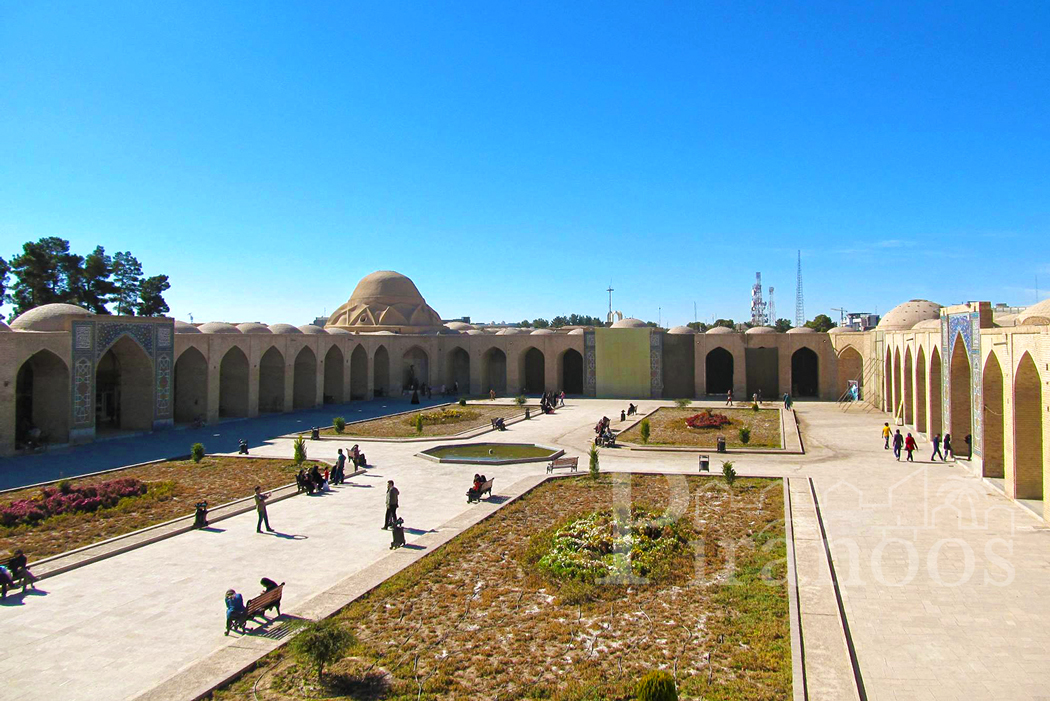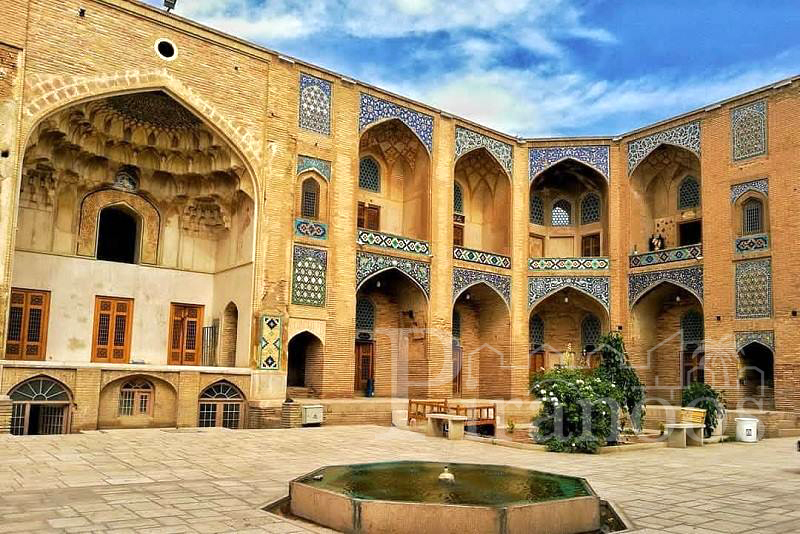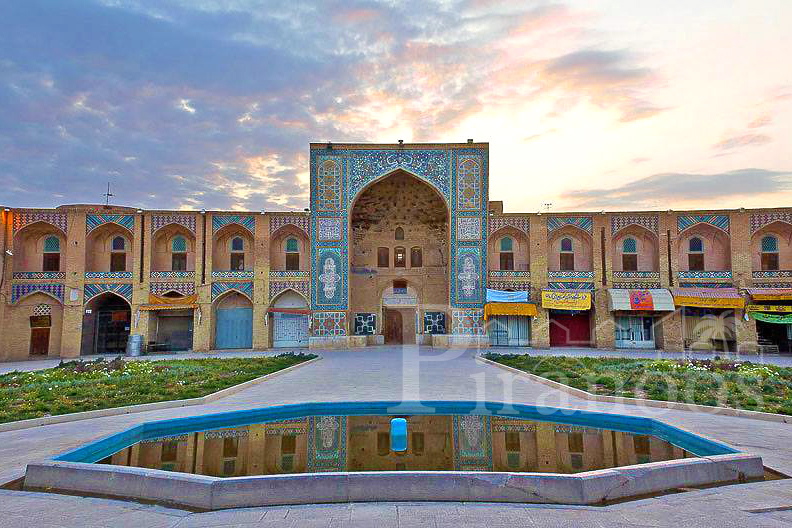Ganjali Khan Complex is located in the old center of Kerman city and next to the big bazaar of Kerman. Ganjali Khan, one of the famous rulers of Kerman during Shah Abbas’s reign, had ruled Kerman from 1005 to 1034 AH and built many buildings and monuments in this city. Some of the public monuments left by this famous ruler are: the Ganjali Khan complex inside Kerman city, the Robat Zeinuddin (Ganjali Khan inn) on Yazd-Kerman road, Howz Khan on Kerman-Mashhad road and some qanats (aqueducts) in Kerman city.
Ganjali Khan Complex is one of the most beautiful monuments of the Safavid era. The complex includes a square, a bathhouse (Hamam), an inn, a mosque, an Ab-anbar, a school and more. The architect of this amazing complex was “Master Sultan Mohammad Memar Yazdi” and its architectural style is Isfahan style. This historical complex is 11000 square meters.
Ganjali Khan Square is located in the center of city and near the big Bazaar of Kerman. The Bazaar is located on three sides of the square and on the other side is the Ganjali Khan Saray. You can watch the masterpiece of Iranian old and traditional architecture in this square. The elegant brick vaults, enchanting tiling, greenery, beautiful Howz (pond) and other spectacular architectural elements have doubled the beauty of the square. The amazing architecture of this historical square resembles the Naghsh-e Jahan Square in Isfahan and the Amir-Chakhmagh Square in Yazd. The importance of architecture of this square becomes even greater when you know that much attention has been paid to the construction of this square in full compliance with the principles of urban planning. There is no car in the square, and you can only walk.

The Bazaar (market) is located in the southern part of Ganjali Khan Square. The historic (Hamam) bath of Ganjali Khan and eighteen stores are at the right of this Bazaar and there are some beautiful vaults at the left side of this market which the peddlers are working underneath. At the end of Ganjali Khan Bazaar, there is a goldsmith market known as Qeysarie.

The mosque is located on the northeast side of Ganjali Khan Square and was used to be the prayer room of the Ganjali Khan inn (caravan-serai) or the adjacent school. The mosque’s main building is small and includes an elegant Shabestan and an entrance porch (Ivan). The porch has a simple architecture decorated with attractive plaster works with beautiful geometric patterns. The dome roof of the mosque has 12 skylights. The combination of plasterworks, paintings and Mogharnas has been used to decorate the Ganjali Khan Mosque. There are also excellent inscriptions on the thuluth Qur’anic script in the mosque.

Bathroom is another o building of Ganjali Khan Complex that you should not miss visiting. In this historical bathhouse, you will find beautiful plasterworks and paintings; some of them were designed in the Safavid era and some in the Qajar era. The entrance to the bathhouse leads to an amazing Sarbineh (the traditional changing room in old public bathhouses) through a small vestibule (Hashti).
There is a stone Howz (pool) in the middle of Ganjali Khan Bath in Kerman, which attracts tourists and is very beautiful. This bath is one of the most beautiful and spectacular historical bathhouses in Iran. This Hamam is now used as an anthropological museum and has interesting wax sculptures that represent people from different classes of society at that time, such as clergy, craftsmen, ordinary people, and so on.
Located on the eastern side of Ganjali Khan Square, it was once a prosper school that later became the inn. Its architect was Mohammad Soltani Yazdi. The school is currently a faculty of art affiliated to Bahonar University of Kerman and is registered as one of Iran’s national monuments.
Zarrab khaneh was a place where coins were made. This building is on the north side of the square and in front of the bathhouse. The beautiful interior decoration of the building is plasterworks in the form of false bricks. This fascinating building has a tall dome and there is a Kolah-Farangi (pergola) on top of it that provides some of the light inside. Under the dome roof and below the skylight is a square Howz that has created attractive lighting for the interior atmosphere. Today the Zarrab khaneh has become a coin museum and visited by many tourists every day.
On the opposite side of the inn is the historic Ganjali Khan Ab- Anbar, which was a place for city water storage. Ab- Anbar on the west side of the square with the amazing tile decorations of the Safavid era was built by the famous architect Master Abdullah by the order of Alimardan Khan son of Ganjali Khan.